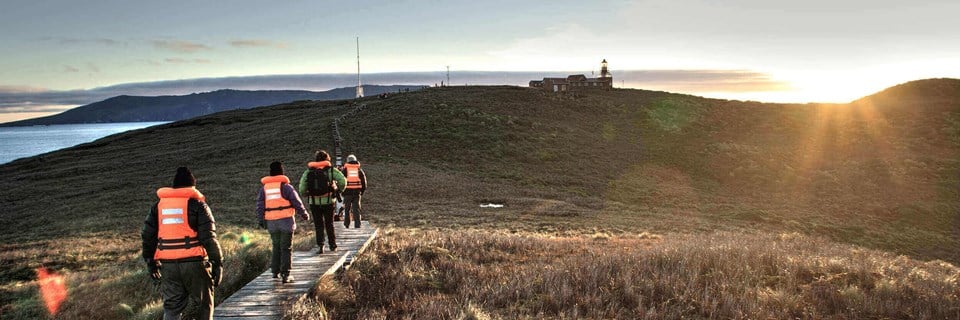Ever wondered what life is like at the end of the world? Visit Cape Horn on an expedition cruise and evoke the spirit of those early intrepid sailors.
Below latitude 50
Cape Horn is part of a remote archipelago of islands that represent the last vestiges of land before the turbulent waters of the Drake Passage take over, separating Tierra del Fuego and Antarctica.
It is a furious land where the Atlantic and Pacific Oceans meet in a rage. Screaming winds batter barren headlands inhabited by a few hardy souls. Whales, seals and dolphins patrol the turbulent waters and albatross and cormorant soar in the skies. No one comes to Tierra del Fuego for R&R, instead it is a taste of peril from bygone days with modern comfort and safety. As the noted quote says "below 40 degrees latitude there is no law, below 50 there is no God."
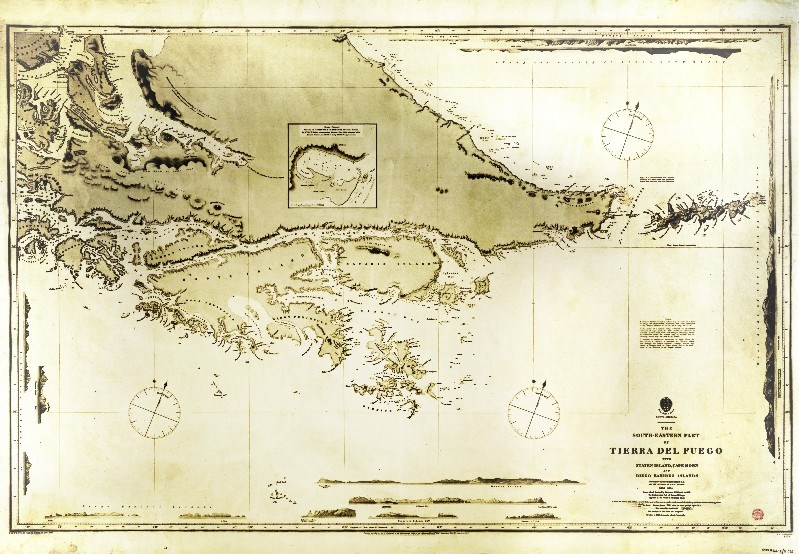
Early map of Tierra del Fuego used by HMS Beagle
An expedition cruise to Cape Horn carries you along paths blazed by daring Dutch sea commanders in the 17th century and followed by countless thousands of sea clippers during the two centuries that followed. Many didn't survive and the unforgiving waters have claimed hundreds of ships and an estimated 10,000 men in their attempts to 'round the Horn'.
It is for this reason that such an endeavour is known in the sailing world as the nautical equivalent of climbing Mount Everest.
The first sighting & famous voyages
Cape Horn was first 'rounded' by Dutch sailors in 1616 looking for a new route through Tierra del Fuego to break the monopoly of the Dutch East India Company. Imagine their surprise and delight at having discovered that, contrary to prior belief, the area south of the established Straits of Magellan route did not extend in one vast block of impenetrable land mass down to Antarctica. The delight was short-lived however. The commander Willem Schoutan and the crew were promptly arrested and sent back from whence they came, though not before having Christened the most southern island after Schoutan's hometown Hoorn.
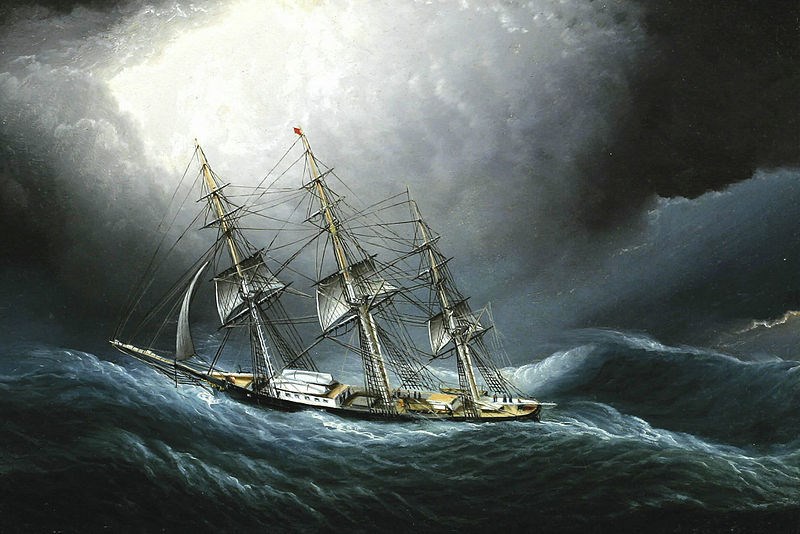 Perilous early clipper journeys
Perilous early clipper journeys
In the two centuries that followed Schoutan's blazing of a new trail around the bottom of South America, the route became a vital, if perilous, artery of trade. A plethora of goods were transported between Asia and Europe on epic scales and the traffic only increased during the California Gold Rush of the mid 19th century.
One of the most famous vessels to pass this way the HMS Beagle, captained by British naval office Robert Fitzroy (after whom a mountain in the Argentine Andes is named, not far north of Tierra del Fuego) and carrying a certain Charles Darwin on a voyage of discovery around South America. The pair nearly met their end during a particularly violent and unexpected storm, forcing them to take refuge in a nearby cove to survive.
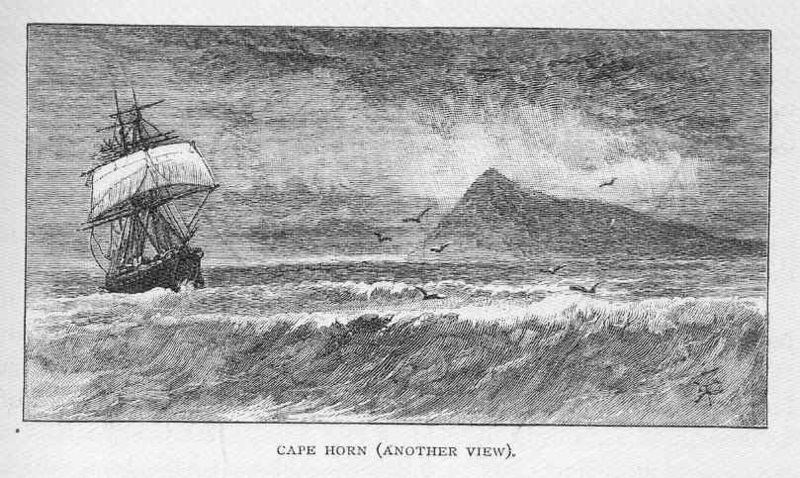
From Darwin's Journal of Researches (source Freshwater and Marine Image Bank)
End of an era
Such were the dangers, costs and the rising death toll of journeys around Cape Horn, the route was largely shunned by the invading Spanish conquistadors, who instead ventured to transport their conveyor belt of minerals, gold and silver extracted from the mines of South America by land. In 1914 there was an even better reason to avoid the Cape altogether; the opening of the Panama Canal.
With the arrival of this wonder of modern engineering, suddenly there was an infinitely less arduous way of getting from one coast of the Americas across to the other, with a sophistication that smoothed the way and left the old route, and the port of Valparaiso, rather redundant.
Some of the huge void left by the trade clippers is now filled by a small selection of expedition cruise vessels bringing adventurous travellers to this isolated archipelago at the 'end of the world'. But what exactly is there to do and see on Cape Horn? What should one expect to find at the lower limits of this great continent?
Setting foot on Cape Horn
There are few distinguishable landmarks on Cape Horn, unsurprising given its remote location of course. The most striking focal point on the island is the poignant Cape Horn Monument, dedicated to the thousands of hardy souls who set out to round the Horn but never made it. Erected in 1992 it stands tall over the open landscape, a silver albatross which brings home the perilous nature of seafaring at these latitudes.
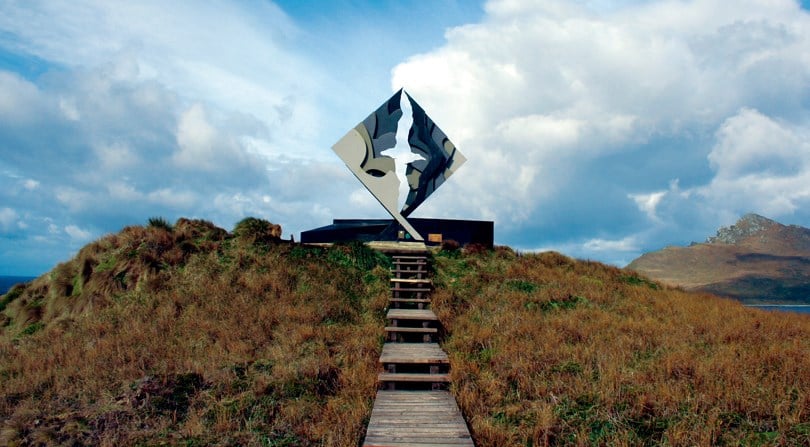
The other man-made elements on the island consist of the Chilean Naval Lighthouse and Station and the small chapel. As interesting as the buildings undoubtedly are, the real attraction here is the chance to meet and put questions to the Chilean Naval Officer and his wife, who are stationed at the end of the world for a whole year. Just how does one survive such a posting? How do they avoid going crazy? Why on earth would they have signed up for such an experience? These are just a small sample of some of the questions you might like to get an answer to.
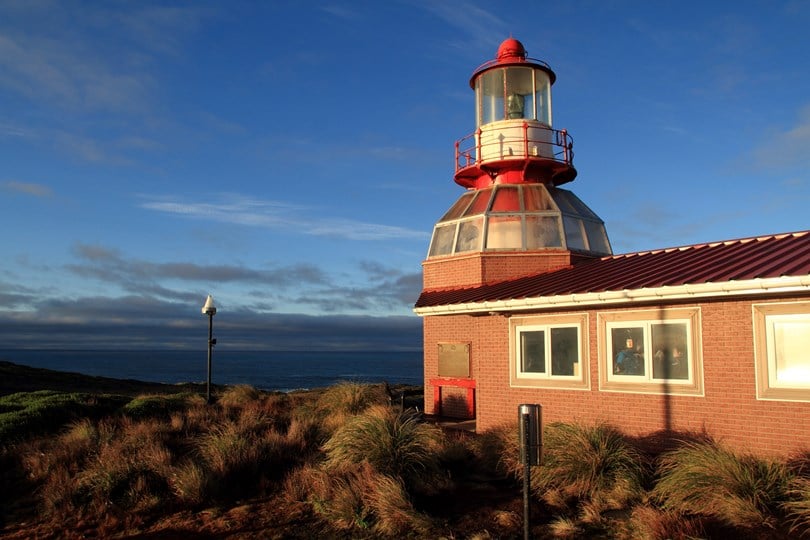
Cape Horn Island forms part of the wider Cape Horn Biosphere Reserve; a national park which also encompasses the Hermite Islands and the Wollaston Archipelago. Among the flora found all the way down here, thriving in such harsh conditions, are bryophytes - miniature forests of which there are many hundreds of species. In the waters around the Cape one should look out for sea lions, whales, dolphins and seals.
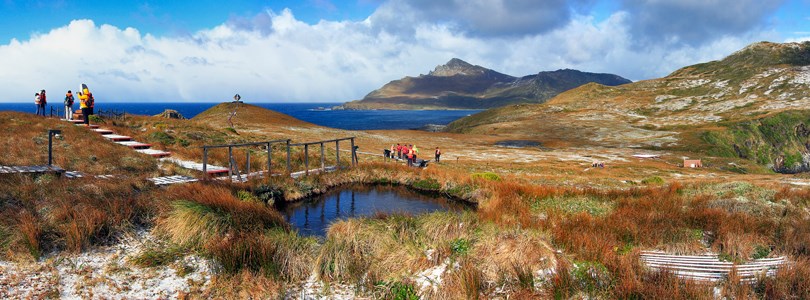
Practicalities of Landing on Cape Horn
The winds down here are infamous, Christened as the furious fifties and the screaming sixties as you navigate through the latitudes. Brutal winds whip unchecked around the edges of Antarctica, gathering force as they are funneled through the gap between the top of the Antarctic Peninsula and the lower reaches of Patagonia. Underneath the water Antarctic currents and changing land masses add further challenges for the captain.
For this reason, setting foot on Cape Horn is rightly considered one of the highlights of an expedition cruise to Tierra del Fuego, but it should be noted that, given the raw force of the elements this far south, a landing cannot be guaranteed, even in the summer months. When visiting Cape Horn, it is necessary to disembark from the Asutralis cruise vessel into smaller zodiac boats, safely reach the island from a distance and then be able to return within the same window of opportunity amid dynamic and unpredictable weather conditions. Quite rightly, the captain will always prioritise the safety of all passengers.
For those who are particularly keen on visiting Cape Horn, you might consider the seven night itinerary offered by Australis. As well as offering an extra three nights beyond the standard tour schedule, it also gives you two opportunities to attempt a landing on the island, first on day two and then again on the penultimate day.
What else to see on a Cape Horn Cruise
Visiting Cape Horn is only part of the Tierra del Fuego cruise experience. Departing from the small Patagonian cities of Ushuaia in Argentina or Punta Arenas in Chile, Australis cruises traverse the magnificent fjords, channels and glaciated alleys of this fabled and picturesque region.
Some highlights include the Magellanic penguin colonies of Magdalena Island and Tucker Islet, the immense Pia, Aguila and Garibaldi glaciers, pristine Patagonian rain forests and glaciated waterfalls, beaver habitats and the historic bays which the ancient Yamana tribe once inhabited.
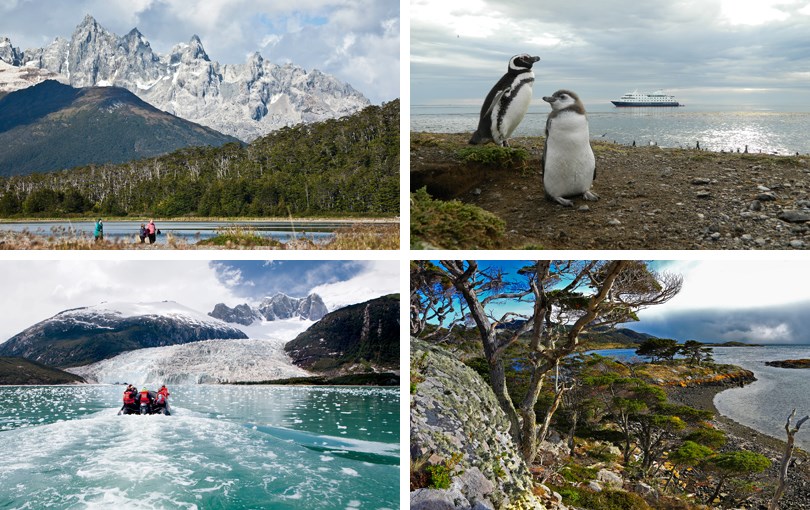
Choose your perfect holiday
Find inspiration from our selection of itinerary suggestions, a great starting point for your next trip
View More Tours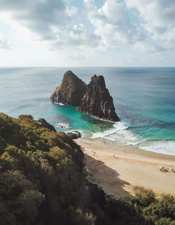
Stay in touch
Infuse your travels, with inspiration from our monthly newsletter.
READY - 20 April 2024
LANDMARK TOURS: Multi-Country & Cross Continent. New Cosmopolitan Tour: Buenos Aires, Iguazu, Rio
CHINA & INDIA: Local Life, People & Unique Cultures
GUIDES by Veloso Tours, are the best Local Hosts
PRIVATE VILLAS: Quality Time in exclusive settings
TRAVEL INSURANCE with extensive COVID-19 cover
